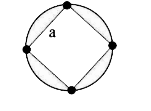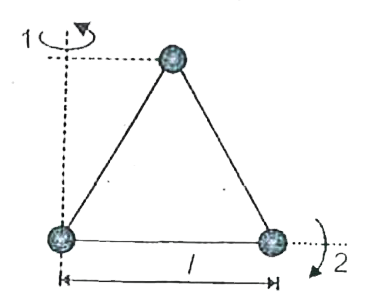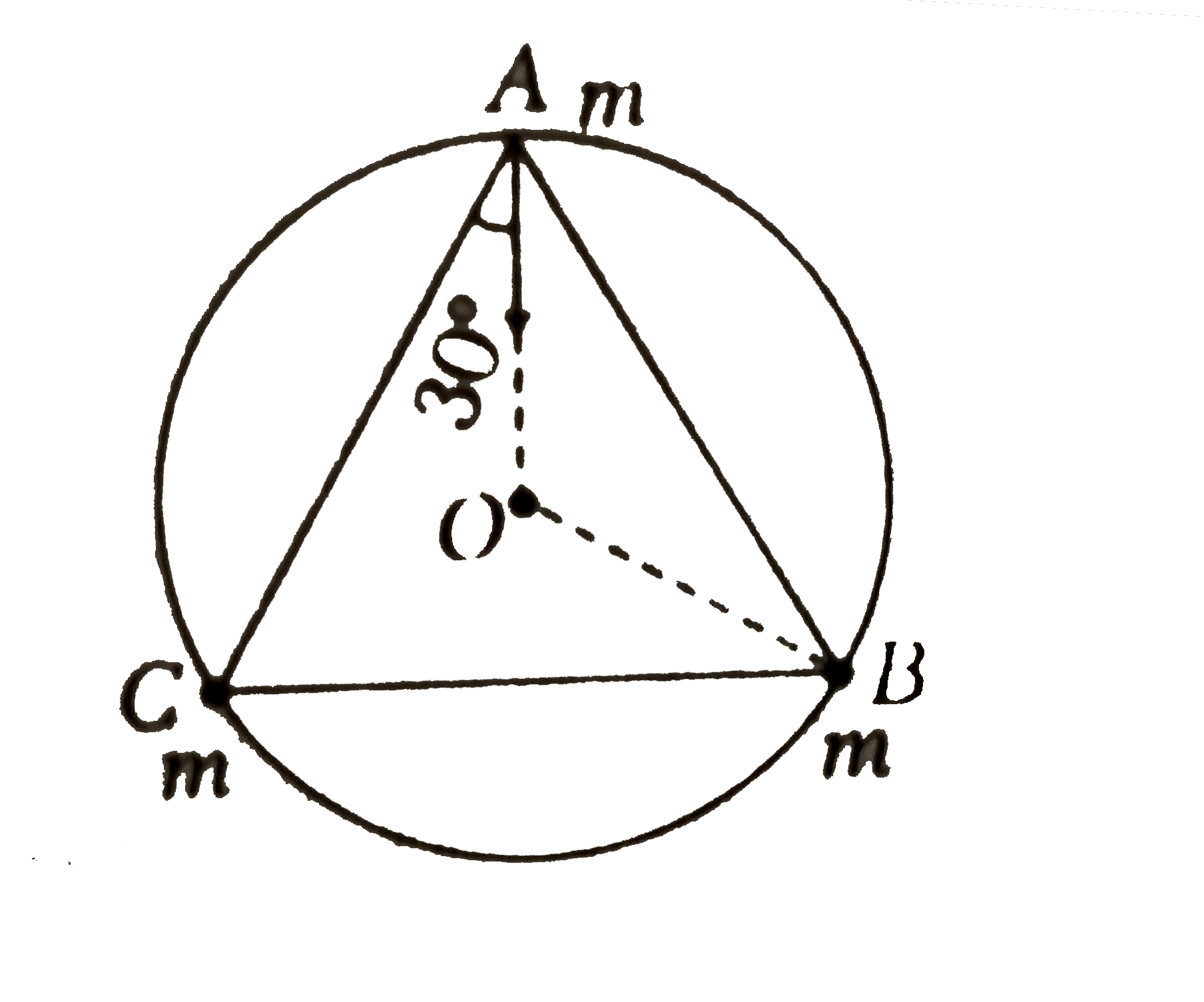Three identical particles each of mass "m" are arranged at the corners of an equiliteral triangle of side "L". If they are to be in equilibrium, the speed with which they must revolve under the influence of one another's gravity in a circular orbit circumscribing the triangle is
√3GmL
√GmL
√Gm3L
√3GmL2
The correct Answer is:B
To solve the problem of three identical particles each of mass "m" arranged at the corners of an equilateral triangle of side "L" and determining the speed required for them to revolve in a circular orbit under the influence of each other's gravity, we can follow these steps:
Step 1: Understand the Forces Acting on Each Particle
Each particle experiences gravitational attraction from the other two particles. The gravitational force F between any two particles is given by Newton's law of gravitation:
F=Gm2L2
where G is the gravitational constant, m is the mass of each particle, and L is the distance between them.
Step 2: Calculate the Resultant Force on One Particle
For particle C, the forces acting on it due to particles A and B (denoted as FCA and FCB) can be resolved. Since the angle between the forces is 60∘, we can find the resultant force FR using vector addition:
FR=√F2CA+F2CB+2FCAFCBcos(60∘)
Since FCA=FCB=F:
FR=√F2+F2+2F2⋅12=√3F2=√3F
Step 3: Determine the Radius of Circular Motion
The particles revolve around the centroid of the triangle. The distance from the centroid to any vertex (let's say point C) can be calculated. For an equilateral triangle, the distance from the centroid to a vertex is given by:
r=L√3
Step 4: Apply Centripetal Force Condition
For the particles to remain in circular motion, the centripetal force must equal the resultant gravitational force acting on the particle. The centripetal force Fc is given by:
Fc=mv2r
Setting the centripetal force equal to the resultant gravitational force:
mv2r=√3F
Substituting F=Gm2L2:
mv2L√3=√3⋅Gm2L2
Step 5: Solve for Velocity v
Rearranging the equation to solve for v2:
mv2⋅√3L=√3⋅Gm2L2
Cancelling m from both sides and simplifying:
v2=GmL
Taking the square root gives:
v=√GmL
Final Answer
The speed with which the particles must revolve in a circular orbit circumscribing the triangle is:
v=√GmL
Each particle experiences gravitational attraction from the other two particles. The gravitational force F between any two particles is given by Newton's law of gravitation:
For particle C, the forces acting on it due to particles A and B (denoted as FCA and FCB) can be resolved. Since the angle between the forces is 60∘, we can find the resultant force FR using vector addition:
The particles revolve around the centroid of the triangle. The distance from the centroid to any vertex (let's say point C) can be calculated. For an equilateral triangle, the distance from the centroid to a vertex is given by:
For the particles to remain in circular motion, the centripetal force must equal the resultant gravitational force acting on the particle. The centripetal force Fc is given by:
Rearranging the equation to solve for v2:
The speed with which the particles must revolve in a circular orbit circumscribing the triangle is:
Topper's Solved these Questions
- GRAVITATIONBOOK - NARAYNACHAPTER - GRAVITATIONEXERCISE - LEVEL III
44 Videos
- GRAVITATIONBOOK - NARAYNACHAPTER - GRAVITATIONEXERCISE - NCERT BASED QUESTIONS
26 Videos
- GRAVITATIONBOOK - NARAYNACHAPTER - GRAVITATIONEXERCISE - LEVEL I(C.W.)
51 Videos
- FRICTIONBOOK - NARAYNACHAPTER - FRICTIONEXERCISE - Passage type of questions I
6 Videos
- KINETIC THEORY OF GASESBOOK - NARAYNACHAPTER - KINETIC THEORY OF GASESEXERCISE - LEVEL-III(C.W)
52 Videos
Similar Questions
Four identical particles of mass M are located at the corners of a square of side ‘a’. What should be their speed if each of them revolves under the influence of others’ gravitational field in circular orbit circumscribing the square ?

View SolutionThree particles each of mass m=1 kg, are located at the vertices of an equilateral triangle of side a =4m. The speed at which they must move to revolve in a circular orbit, under the inluence of mutual gravitational force, circumscribing and preserving the equilateral triangle is v=n√G, then the value of n is
View Solution
Knowledge Check
Three particle each of mass m are placed at the corners of equilateral triangle of side l

Which of the following is/are correct ?AMoment of inertia about axis '1' is 54ml2BMoment of inertia about axis '2' is 34ml2CMoment of inertia about an axis passing through one corner and perpendicular to the plane is 2ml2DAll of theseThree particles each of mass m are arranged at the corners of an equililateral triangle of side L. If one of masses is doubled. The shift in the centre of mass of the system
AL√3BL4√3C√3L4DL2√3Three particle each of mass m, are located at the vertices of an equilateral triangle of side a. At what speed must they move if they all revolve under the influence of their gravitational force of attraction in a circular orbit circumscribing the triangle while still preserving the equilateral triangle ?
 A√GmaB√2GmaC√3GmaD√4Gma
A√GmaB√2GmaC√3GmaD√4Gma
Three particles each of mass m are palced at the corners of an equilateral triangle of side b. The gravitational potential energy of the system of particle is
View SolutionThree particles each of mass m are palced at the corners of an equilateral triangle of side b. The gravitational potential energy of the system of particle is
View SolutionSix identical particles each of mass m are arranged at the corners of a regular hexagon of side length L. If the mass of one of the particle is doubled, the shift in the centre of mass is
View SolutionThree particles each of mass 2kg are at the corners of an equilateral triangle of side √3m. If one of the particles is removed, the shift in the centre of mass is
View SolutionThree identical particles each of mass 0.1kg are arranged at three corners of a square of side √2m. The distance of the centre of mass from the fourth corners is
View Solution
